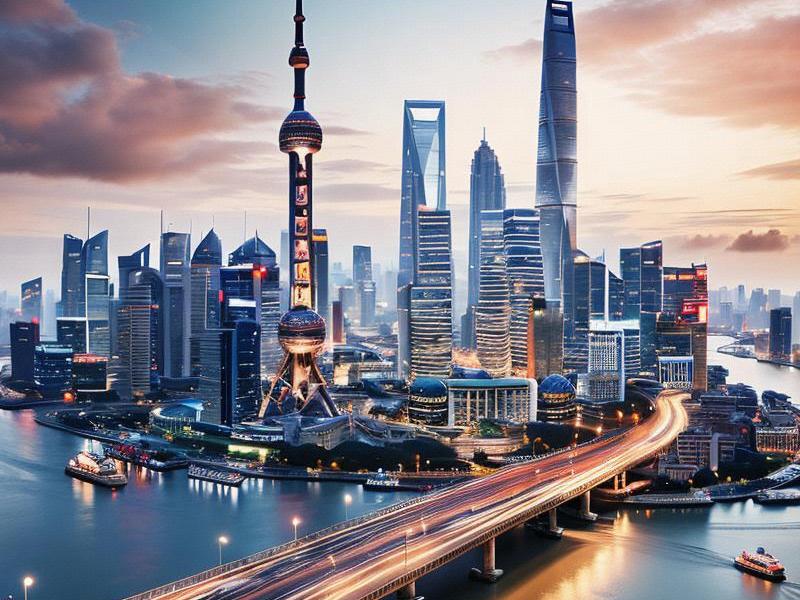This article delves into the remarkable transformation of Shanghai, exploring its journey towards becoming a global hub of innovation and sustainability. From its bustling financial district to its cutting-edge technology parks, Shanghai's story is one of rapid urban development and forward-thinking policies.

Shanghai, the largest city in China and one of the world's most dynamic metropolises, has undergone a profound transformation over the past few decades. Once a small fishing village, it has evolved into a global financial hub and a beacon of innovation and sustainability. This article explores the key factors that have driven Shanghai's transformation and the challenges it faces in maintaining its position as a leading city on the world stage.
The Rise of Shanghai: From Fishing Village to Global Financial Hub
Shanghai's rise to prominence began in the 19th century when it was opened up to foreign trade as one of the treaty ports under the unequal treaties imposed by Western powers. This marked the beginning of Shanghai's integration into the global economy. By the early 20th century, Shanghai had become known as the "Paris of the East," a cosmopolitan city with a vibrant mix of cultures, industries, and commerce.
The economic reforms initiated in China in 1978 further accelerated Shanghai's development. The establishment of the Pudong New Area in 1990 was a pivotal moment in this journey. Pudong, located on the eastern side of the Huangpu River, was developed from farmland into a modern financial district. Today, it is home to some of the world's tallest skyscrapers, including the iconic Oriental Pearl Tower and the Shanghai Tower, which stands as the tallest building in China and the second-tallest in the world.
Innovation and Technology: Shanghai's Engine of Growth
Shanghai has positioned itself as a global leader in innovation and technology. The city is home to several world-class research institutions, universities, and technology parks. Zhangjiang Hi-Tech Park, for example, is one of the largest and most influential technology parks in China, attracting numerous high-tech companies and startups.
爱上海同城对对碰交友论坛 The Chinese government's Made in China 2025 initiative has further fueled Shanghai's growth in advanced manufacturing and high-tech industries. The city has become a hub for industries such as artificial intelligence, biotechnology, and green energy. In 2018, Shanghai launched the Zhangjiang Artificial Intelligence Island, a state-of-the-art facility dedicated to AI research and development.
Sustainability: Building a Green and Resilient City
As one of the most populous cities in the world, Shanghai faces significant challenges related to urbanization, pollution, and resource management. However, the city has taken bold steps towards sustainability and environmental protection.
Shanghai has set ambitious targets to reduce carbon emissions and improve air quality. The city has invested heavily in public transportation infrastructure, including the expansion of its metro system and the development of electric vehicle charging networks. In 2019, Shanghai introduced a ban on the registration of new diesel vehicles, a move aimed at reducing air pollution and promoting cleaner energy use.
The city has also embraced green building practices and urban greening initiatives. The Lujiazui Central Green Space, located in the heart of Pudong, is an example of how urban spaces can be transformed into environmentally friendly areas. The Shanghai Tower incorporates green design features such as vertical gardens and energy-efficient systems, setting a benchmark for sustainable architecture.
Cultural Renaissance: Preserving Heritage and Promoting Creativity
爱上海同城对对碰交友论坛
Shanghai's cultural scene has flourished alongside its economic and technological advancements. The city is known for its blend of traditional Chinese culture and Western influences, reflected in its architecture, art, and cuisine. The Bund, a historic waterfront area, showcases a stunning collection of colonial-era buildings that stand in contrast to the modern skyscrapers of Pudong.
Shanghai has invested in preserving its cultural heritage while fostering creativity and innovation. The Shanghai Museum, one of the largest and most prestigious museums in China, houses a vast collection of art and artifacts that span thousands of years. The city also hosts numerous cultural festivals and events, such as the Shanghai International Film Festival and the Shanghai Biennale, which attract artists, filmmakers, and art enthusiasts from around the world.
Challenges and Opportunities
Despite its many achievements, Shanghai faces several challenges in maintaining its position as a global leader. The rapid pace of urbanization has led to issues such as housing shortages, traffic congestion, and environmental degradation. The city must continue to innovate and adapt to address these challenges.
One of the key areas for future development is smart city technology. Shanghai is investing in digital infrastructure and data-driven solutions to improve urban management and enhance the quality of life for its residents. The city's smart city initiatives include intelligent transportation systems, digital healthcare services, and smart energy management.
上海龙凤阿拉后花园 Another area of focus is talent attraction and retention. As a global hub of innovation, Shanghai needs to attract and retain top talent from around the world. The city has introduced policies to support entrepreneurship and innovation, such as tax incentives and funding for startups. It is also working to improve the quality of education and research institutions to foster a culture of innovation.
Conclusion
Shanghai's transformation from a small fishing village to a global financial hub and center of innovation is a testament to the city's resilience and adaptability. Through bold policies and investments in innovation, sustainability, and cultural development, Shanghai has positioned itself as a leading city on the world stage.
As Shanghai continues to grow and evolve, it faces both challenges and opportunities. By embracing smart city technology, attracting top talent, and addressing environmental and social issues, the city can ensure its continued success and maintain its status as a global leader.
Shanghai's story is not just about economic growth; it is about creating a better future for its residents and contributing to the global community. As the city looks to the future, it remains a symbol of China's rise and a model for sustainable urban development.